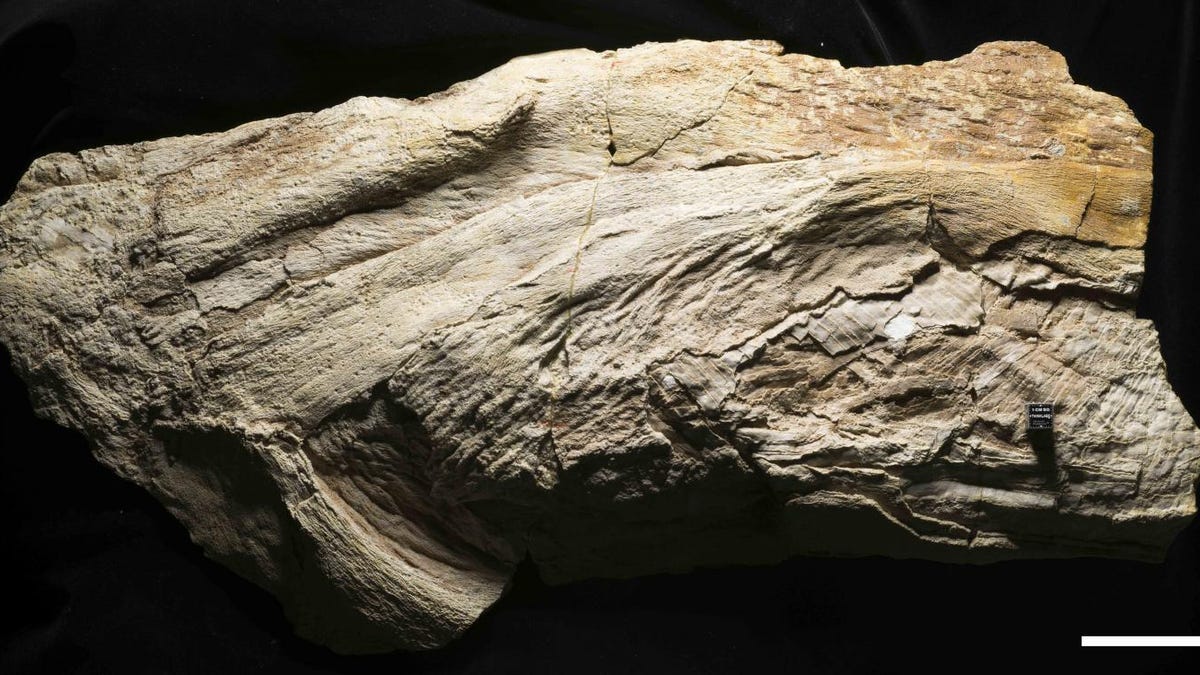Mystery fossil turns out to be super fishy
It's not a plant. It's not a cephalopod. A head-scratching fossil finally gives up some of its secrets as scientists take a fresh look.
It was a case of mistaken identity, twice over. A 1.5-foot-long (0.45-meter) fossil slab discovered 70 years ago has pulled the wool over scientists' eyes for decades. Until now.
Researchers at the American Museum of Natural History took a new look at a fossil found in Kansas that dates back to around 70 million to 85 million years ago. It was originally identified as green algae and then later as a cephalopod (like a cuttlefish). Turns out it's actually a cartilaginous fish, more akin to a manta ray.
This high-magnification photo of the fossil shows the tessellated calcified cartilage.
The fossilized specimen, named Platylithophycus cretaceum, is the subject of a paper published this week in the Journal of Paleontology.
The original ID came about in 1948 when two paleobotanists decided the fossil looked like green algae with fronds. Later, in 1968, two researchers specializing in cephalopods reasoned it actually looked more like a type of cuttlefish.
The museum scientists' biggest clue came from a series of hexagonal shapes on the fossil's surface, which they traced to "tessellated calcified cartilage," a distinct feature of rays and sharks.
The researchers also performed a simple chemical test that showed the fossil was "likely made from calcium phosphate, as are the fossilized skeletons of cartilaginous fish like sharks and rays."
In hindsight, the fishy nature of the fossil seems a little obvious.
"In this case, the misidentification didn't happen because of a lack of technology at the time -- scientists familiar with cartilage structure could easily see this was a chondrichthyan fish," says lead author Allison Bronson.
Bronson says the original researchers used reasonable arguments to come to their conclusions, but just failed to look for explanations outside their own fields of study.
While the research has cleared up one major mystery, the specimen still retains some secrets. The fossil preserves the gills of the unknown creature, which isn't enough to go on when it comes to figuring out exactly which species it belonged to.
CNET Magazine: Check out a sample of the stories in CNET's newsstand edition.
Rebooting the Reef: CNET dives deep into how tech can help save Australia's Great Barrier Reef.


